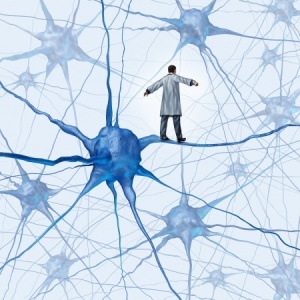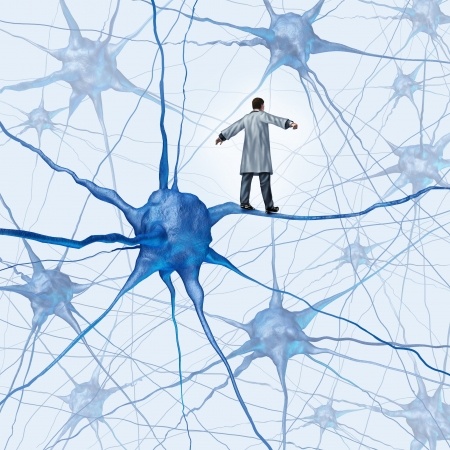
“Rather than fix chemical imbalances in the brain, the drugs create them.” (Robert Whitaker, Anatomy of an Epidemic)
One of the most enlightening books I’ve read recently was Anatomy of an Epidemic, by Robert Whitaker. In the foreword, Whitaker said he originally believed that psychiatric drugs were like “insulin for diabetes.” He believed that psychiatric researchers were discovering the biological causes of mental illnesses and that this led to the development of a new generation of psychiatric drugs that helped “balance” brain chemistry. Then he stumbled upon some research findings that challenged that belief, “and that set me off on an intellectual quest that ultimately grew into this book.”
What follows is a collection of quotes from Anatomy of an Epidemic and a chart containing data on psychiatric medications. There is little additional commentary by me. The power of the quotes is underscored by the sales and prescription data in the chart.
Some of the quotes were handily gathered together for me on Goodreads. My chart is a combination of a listing of the top 25 prescribed psychiatric medications in 2013 found on PsychCentral and data for 2013 pharmaceutical sales on Drugs.com. It follows the rank order given by John Grohol on PsychCentral for the top 25 most prescribed psychiatric medications in 2013. I then included the sales data found on Drugs.com from its list of the top 100 pharmaceutical drugs by gross retail sales for the listed drugs.
|
Drug |
Prescriptions-2013 |
Use |
Sales-2013 |
|
Xanax (alprazolam) |
48,465,000 |
Anxiety |
|
|
Zoloft (sertraline) |
41,416,000 |
Depression, anxiety, OCD, PTSD, PMDD |
|
|
Celexa (citalopram) |
39,445,000 |
Depression, anxiety |
|
|
Prozac (fluoxetine) |
28,258,000 |
Depression, anxiety |
|
|
Ativan (lorazepam) |
27,948,000 |
Anxiety, panic disorder |
|
|
Desyrel (trazodone) |
26,242,000 |
Depression, anxiety |
|
|
Lexapro (escitalopram) |
24,920,000 |
Depression, anxiety |
|
|
Cymbalta (duloxetine) |
18,573,000 |
Depression, anxiety, fibromyalgia, diabetic neuropathy |
5,083,111,000 |
|
Wellbutrin XL (bupropion) |
16,053,000 |
Depression |
|
|
Effexor (venafaxine) |
15,796,000 |
Depression, anxiety, panic disorder |
|
|
Valium (diazepam) |
14,754,000 |
Anxiety, panic disorder |
|
|
Paxil (paroxetine) |
14,335,000 |
Depression, anxiety, panic disorder |
|
|
Seroquel (quetiapine) |
14,326,000 |
Bipolar disorder, depression |
1,183,989,000 |
|
Amphetamine salts (Adderall) |
12,785,000 |
ADHD |
727,892,000 |
|
Risperdal (pisperidone) |
12,320,000 |
Bipolar disorder, schizophrenia, iirritability in autism |
|
|
Vyvanse (lixdexamfetamine) |
9,842,000 |
ADHD |
1,689,091,000 |
|
Concerta ER (methylphenidate) |
8,803,000 |
ADHD |
|
|
Abilify (aripiprazole) |
8,747,000 |
Bipolar disorder, schizophrenia, depression |
6,293,801,000 |
|
Wellbutrin SR-W (bupropion) |
8,238,000 |
Depression |
|
|
Buspar (buspirone) |
8,065,000 |
Sleep, anxiety |
|
|
Vistaril (hydroxyzine) |
8,052,000 |
Anxiety |
|
|
Amphetamine salts ER (Adderall) |
7,925,000 |
ADHD |
|
|
Zyprexa (olanzapine) |
5,101,000 |
Bipolar disorder, schizophrenia |
|
|
Concerta/Ritalin (methylphenidate) |
5,335,000 |
ADHD |
1,383,814,000 |
|
Pristiq (desvenlafaxine) |
3,217,000 |
Depression |
Of the top 25 prescribed psychiatric drugs in 2013, 13 were to “treat” anxiety; 13 were to “treat” depression; 4 were to “treat” panic disorder; 4 were to “treat” bipolar disorder; and five were to “treat” ADHD. As the chart indicates, some of the medications are used for two or more disorders. In fact, 11 of the top 13 prescribed medications in 2013 could be used for anxiety; 10 of the top 13 could be used for depression. Three of those were benzodiazepines (Xanax, Ativan and Valium); nine were antidepressants of some type (Zoloft, Celexa, Prozac, Desvrel, Lexapro, Cymbalta, Wellbutrin, Effexor and Paxil); and one, Seroquel, was an antipsychotic.
In addition to causing emotional distress, long-term benzodiazepines usage also leads to cognitive impairment (137). Although it was thirty years ago that governmental review panels in the United States and the United Kingdom concluded that the benzodiazepines shouldn’t be prescribed long-term … the prescribing of benzodiazepines for continual use goes on (147). Antidepressant drugs in depression might be beneficial in the short term, but worsen the progression of the disease in the long term, by increasing the biochemical vulnerability to depression. . . . Use of antidepressant drugs may propel the illness to a more malignant and treatment unresponsive course (160). In a recent survey of members of the Depressive and Manic-Depressive Association, 60 percent of those with a bipolar diagnosis said they had initially fallen ill with major depression and had turned bipolar after exposure to an antidepressant (181). Given that the biology of ADHD remains unknown, it is fair to say that Ritalin and other ADHD drugs ‘work’ by perturbing neurotransmitter systems. . . . Cocaine acts on the brain in the same way (227).
Disturbing, huh?
Only six of the most widely prescribed medications were among the 100 best sellers. The six best selling psychiatric medications in the order of their sales were: 1) Abilify ($6.294 billion); 2) Cymbalta ($5.083 billion); 3) Vyvanse ($1.689 billion); 4) Concerta/Ritalin ($ 1.384 billion); 5) Seroquel ($1.184 billion); 6) Amphetamine salts (found in Adderall, $727.9 million). Part of the explanation for the difference is that the majority of the prescribed psychiatric medications are now off patent and available as generic drugs. So they typically don’t make as much money for pharmaceutical companies. An example would be how Abilify was the top grossing prescription for all medications in 2013, but only the 18th most prescribed medication.
With the exception of VyVanse, I’d expect most of the six to also drop out of the top 100 selling drugs of the next few years. Abilify’s patent expires in October of 2014. Cymbalta’s patent expired in December of 2013. Vyvanse’s patent will expire in 2023. Concerta’s patent expired in 2011. Seroquel’s patent expired in 2012.
If you expand the boundaries of mental illness, which is clearly what has happened in this country during the past twenty-five years, and you treat the people so diagnosed with psychiatric medications, do you run the risk of turning an anger-ridden teenager into a lifelong mental patient? (p. 30) We have been focusing on the role that psychiatry and its medications may be playing in this epidemic, and the evidence is quite clear. First, by greatly expanding diagnostic boundaries, psychiatry is inviting and ever-greater number of children and adults into the mental illness camp. Second, those so diagnosed are then treated with psychiatric medications that increase the likelihood they will become chronically ill. Many treated with psychotropics end up with new and more severe psychiatric symptoms, physically unwell, and cognitively impaired. This is the tragic story writ large in five decades of scientific literature (209). Twenty years ago, our society began regularly prescribing psychiatric drugs to children and adolescents, and now one out of every fifteen Americans enters adulthood with a “serious mental illness.” That is proof of the most tragic sort that our drug-based paradigm of care is doing a great deal more harm than good. The medicating of children and youth became commonplace only a short time ago, and already it has put millions onto a path of lifelong illness (246). For the past twenty-five years, the psychiatric establishment has told us false story. It told us that schizophrenia, depression, and bipolar illness are known to be brain diseases, even though … it can’t direct us to any scientific studies that document this claim. . . . Most important of all, the psychiatric establishment failed to tell us that the drugs worsen long-term outcomes (358).





